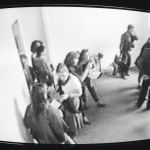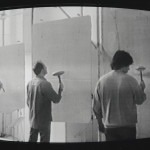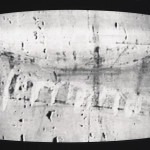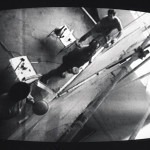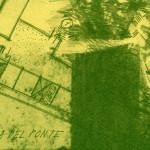Il piacere dell’occhio. Suoni di pietra
If the shadow of a body hit by light implies a kind of absence, a subtraction through light, a space describing the negative shape of that body; then a sound produced by a body in a state of relaxation, stimulated by external pressure, repeats and develops the movement condensed inside that body. Similar to shadow in its secrecy and depth, similar to light in its mobility and overflowing evidence, sound creates a bridge between the two, outlining the volume and the movement of an invisible yet sensible, real body, anticipating the creation of actual bodies and attributing value to translucent matters, so that they can intertwine into physical entities.
“In the beginning was Sound”: the most ancient ideological heritage of humanity identifies Sound, interpreted by the Holy Writ as Verb or Word, as the origin of the universe, of the “gradual materialization of the original acoustic rhythm”. If this is true, as every existing object, shape, word, or idea is derived from a continuous stream of energy, as every being is equipped with its own voice, so every solid substance can have its inner rhythm rediscovered and propagated in a liquid state, developing what used to be its invisible acoustic body.
After years of research on the structure of crystals and light refraction, Amalia Del Ponte began working with stone sculpture, submitting it to the same structural analysis and to the same ancient idea, now partially confirmed by contemporary science (when it rejects a static vision of matter and a dualistic division of traditional substances of classical physics, in order to embrace the theory of “field density”, where matter and energy meet). Avant-garde movements in the early 20th Century contributed to bring man back to the original relationship with the invisible world. While Boccioni is the artist who most explicitly addressed the connection between art and environment, it was De Chirico who provided it with a metaphysical sense. Amalia Del Ponte stands in between these two instances, without ever lacking any coherence in such a choice of field. Produced by striking stone slabs previously refined and tuned, sound emanates and fluctuates, in search of an ungraspable center. According to ancient Indian philosophy, hearing is the source of all knowledge: through listening, men were believed to have deeper access to their rhythmic life. Sound breaks down the world’s materialization, joining knowledge (Light-sense) and hearing, but it also intertwines different levels, establishes connections between Earth and the world above and below it. An abnormal position within society and its cliques and professions, that of the musician-priest holds the highest post among men and gods, while the musician-magician occupies the lowest place among men and demons.
Whatever the case, his condition is privileged, since it comes from an individual choice, a mission similar to that of a surgeon or, among artists, a poet. A position shared by Del Ponte’s work so far: a revolution in the paradigm of sculpture.
Giovanna dalla Chiesa
